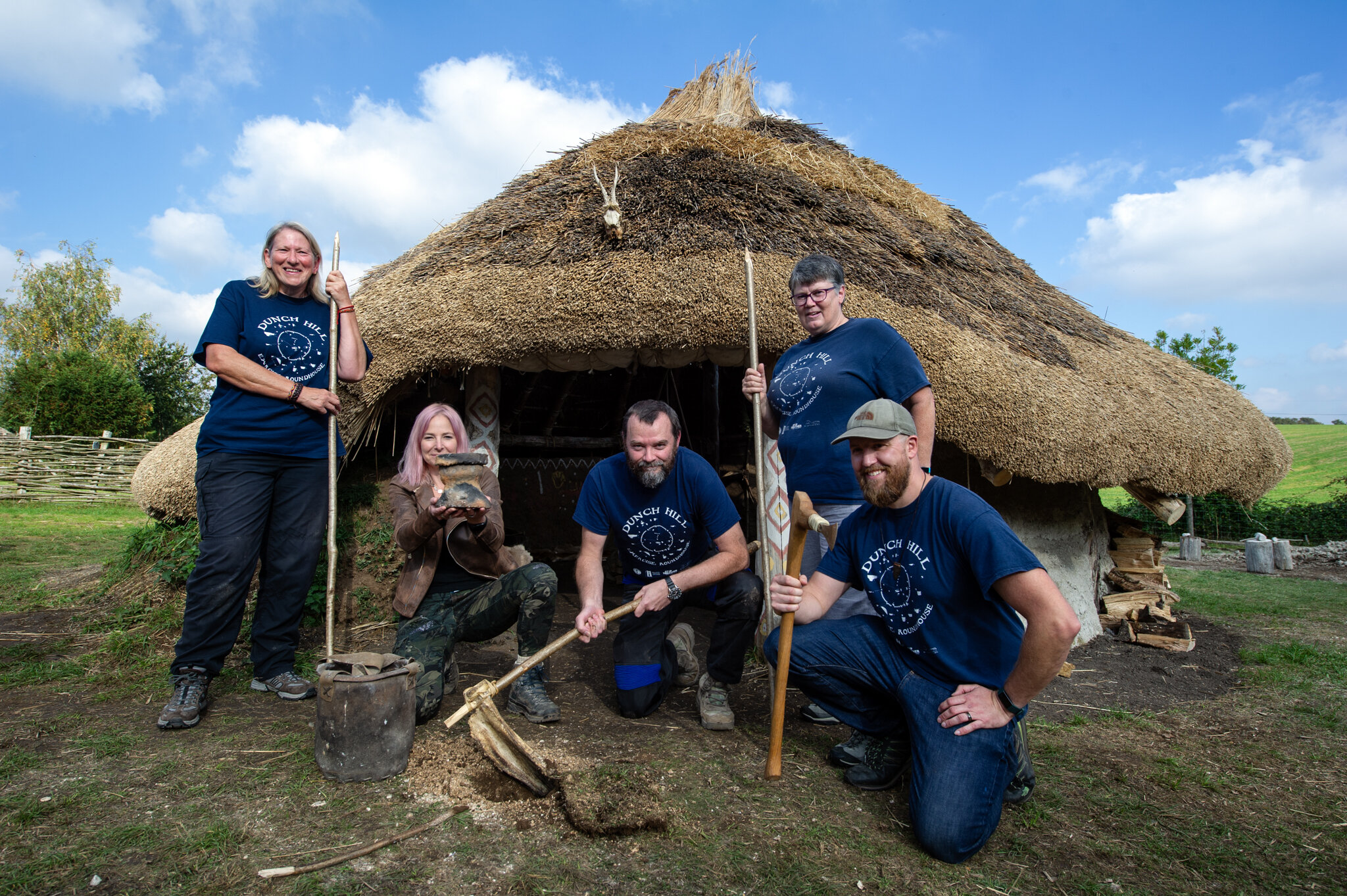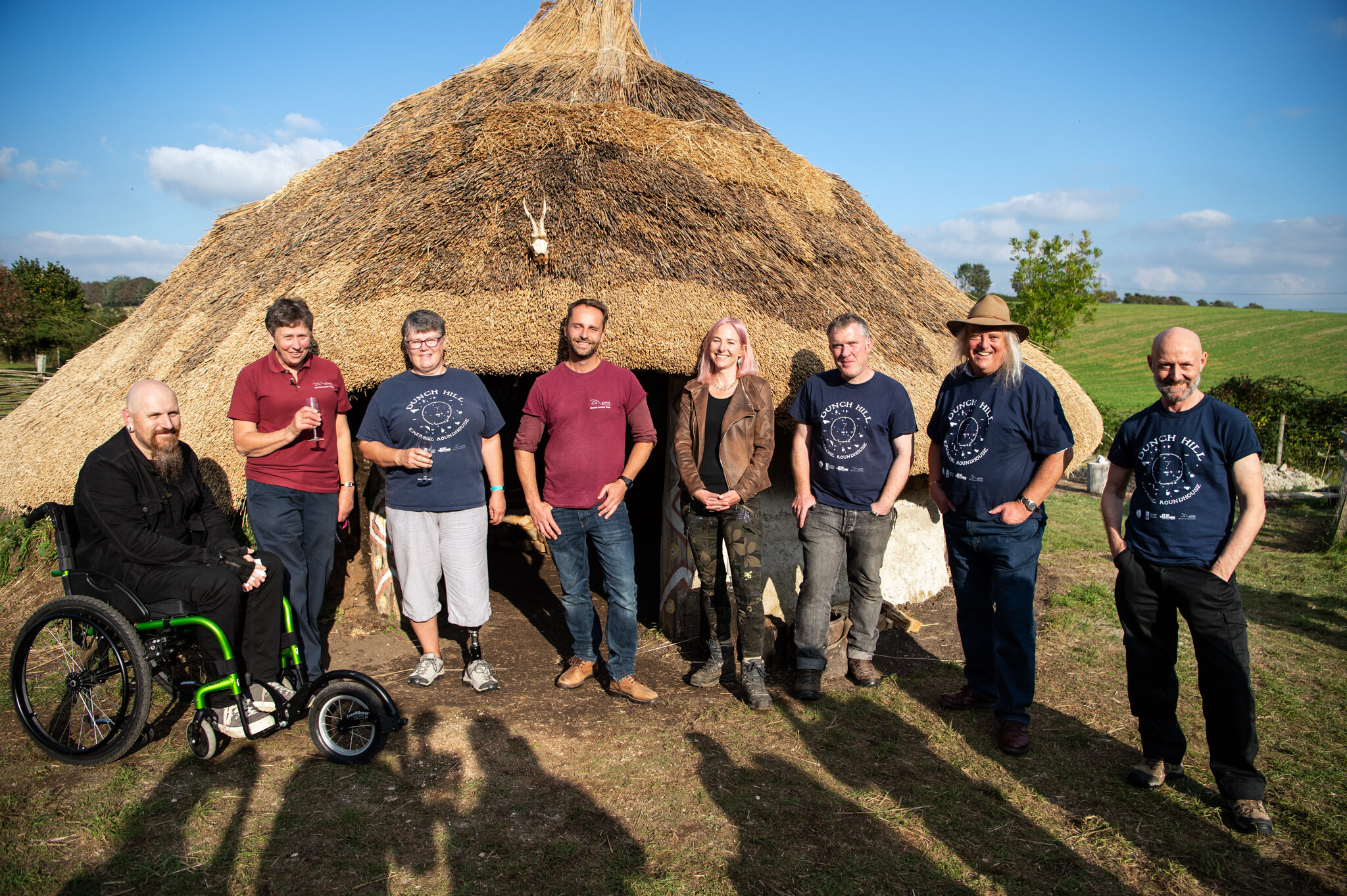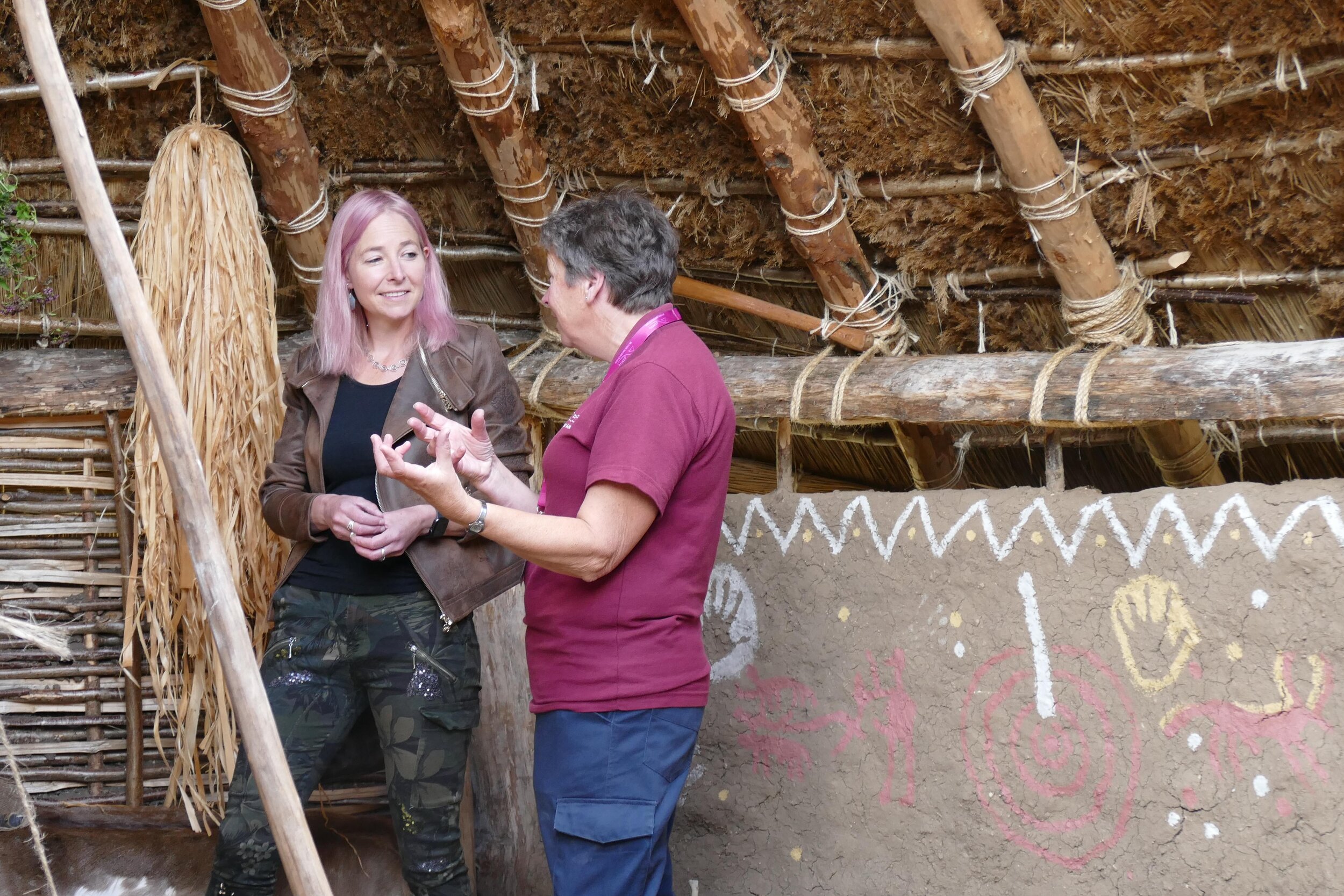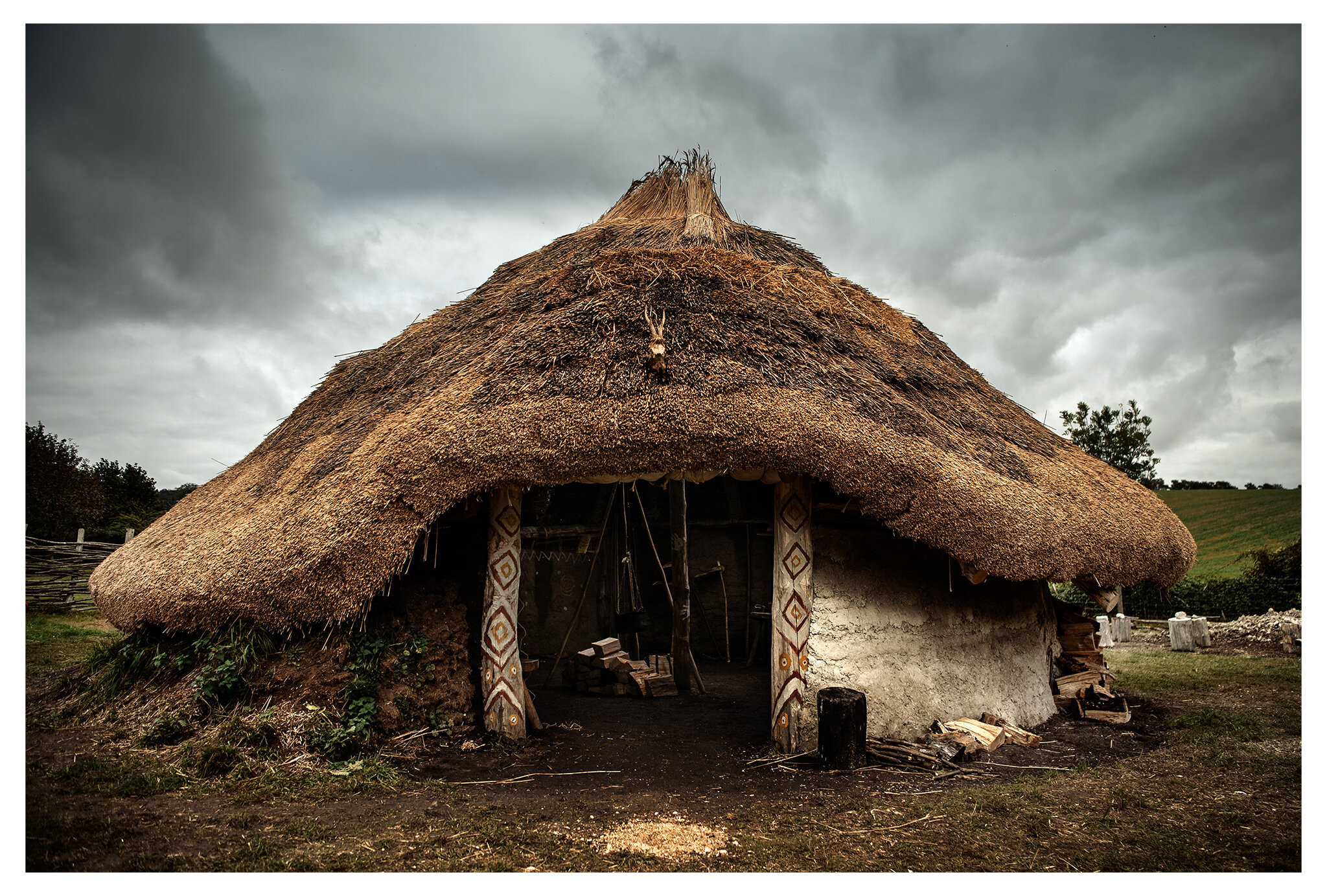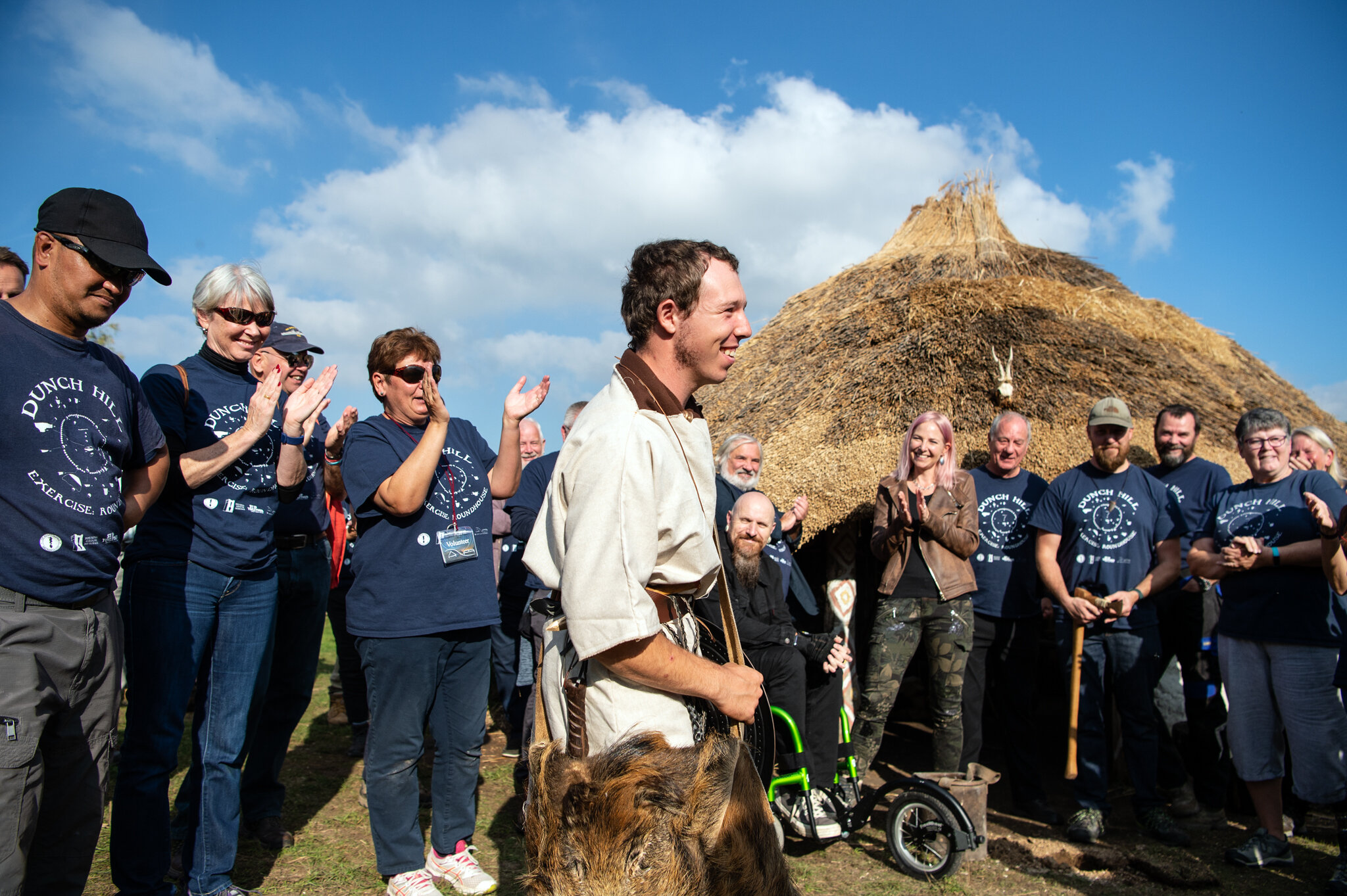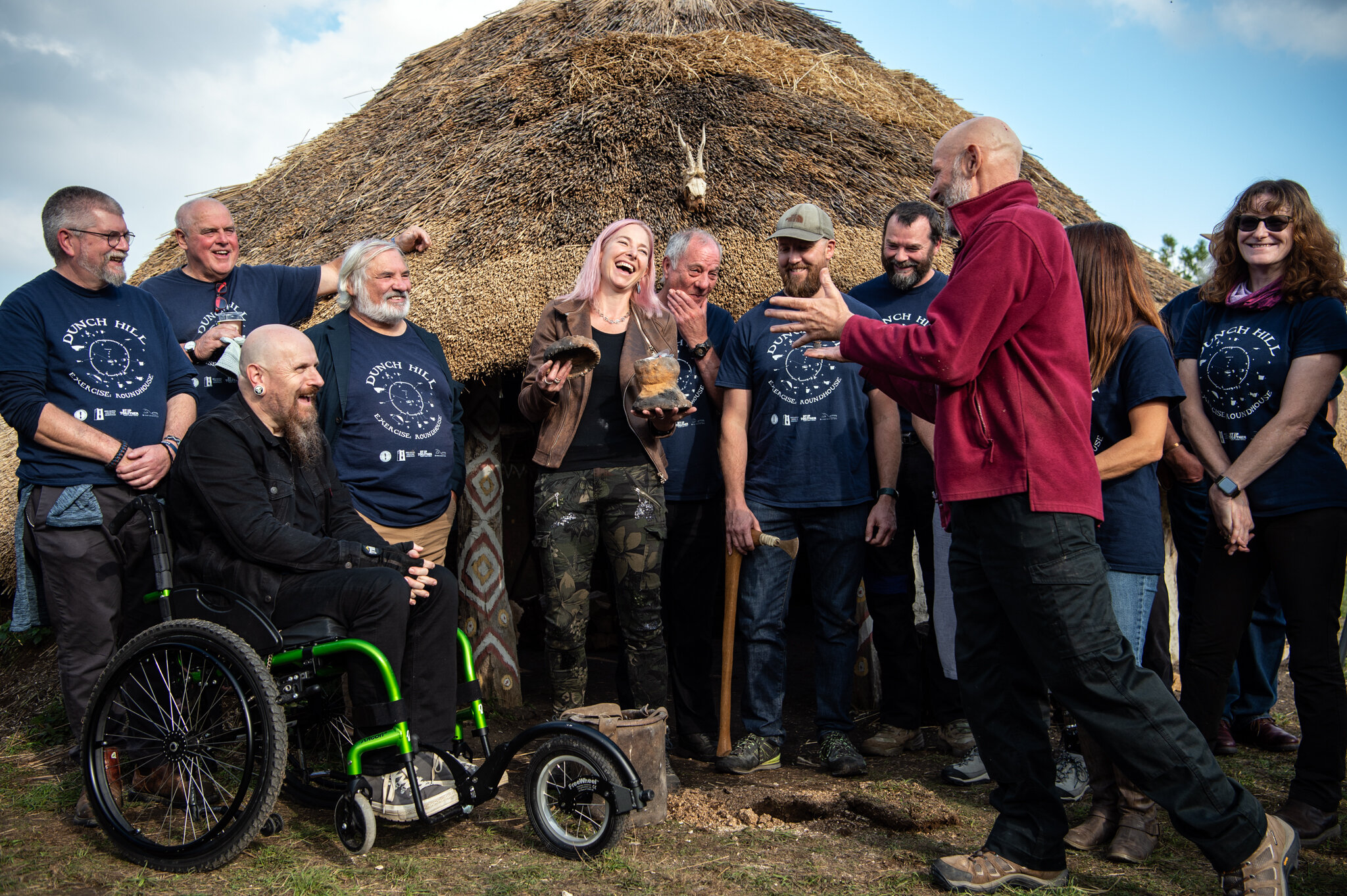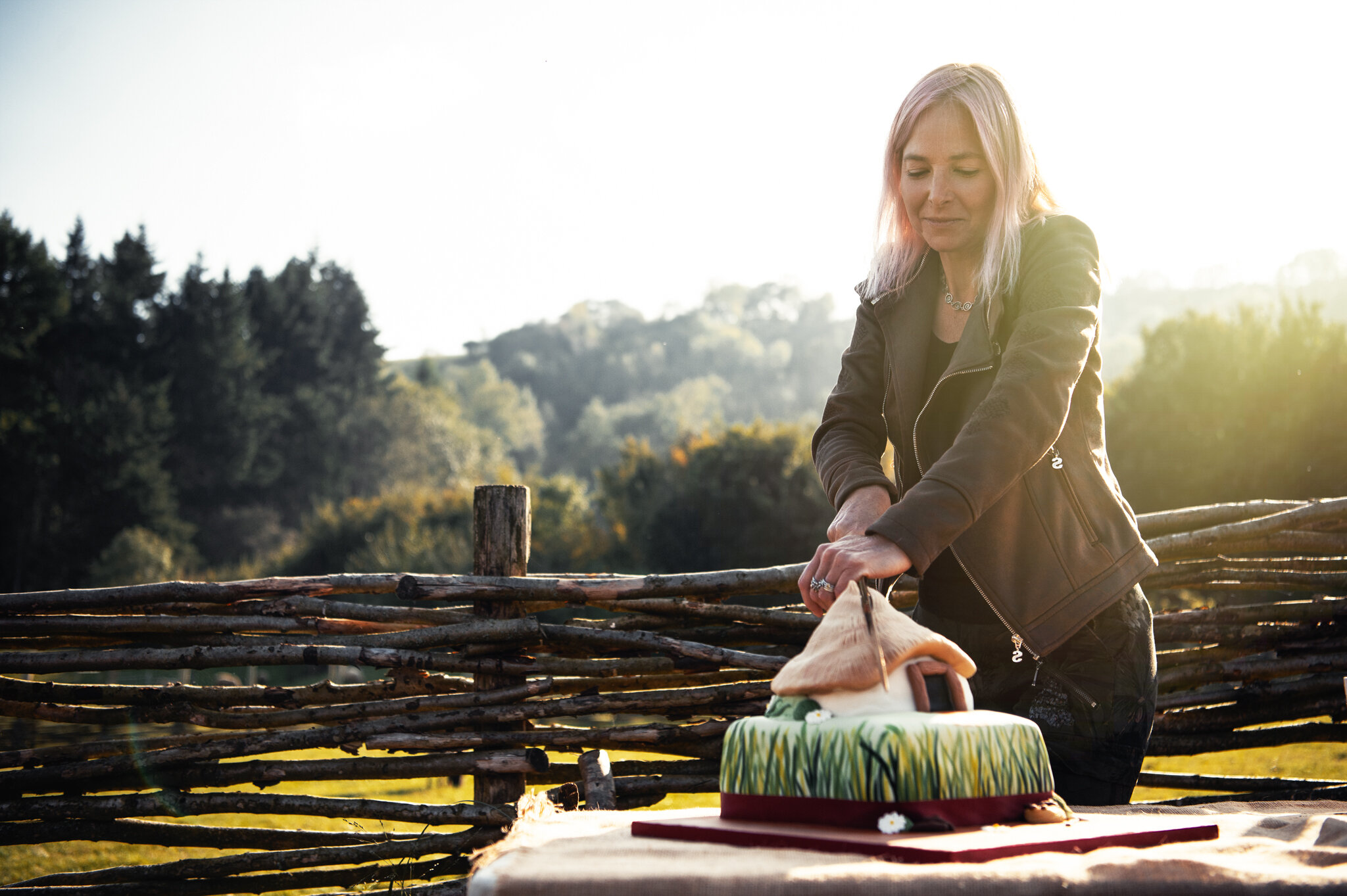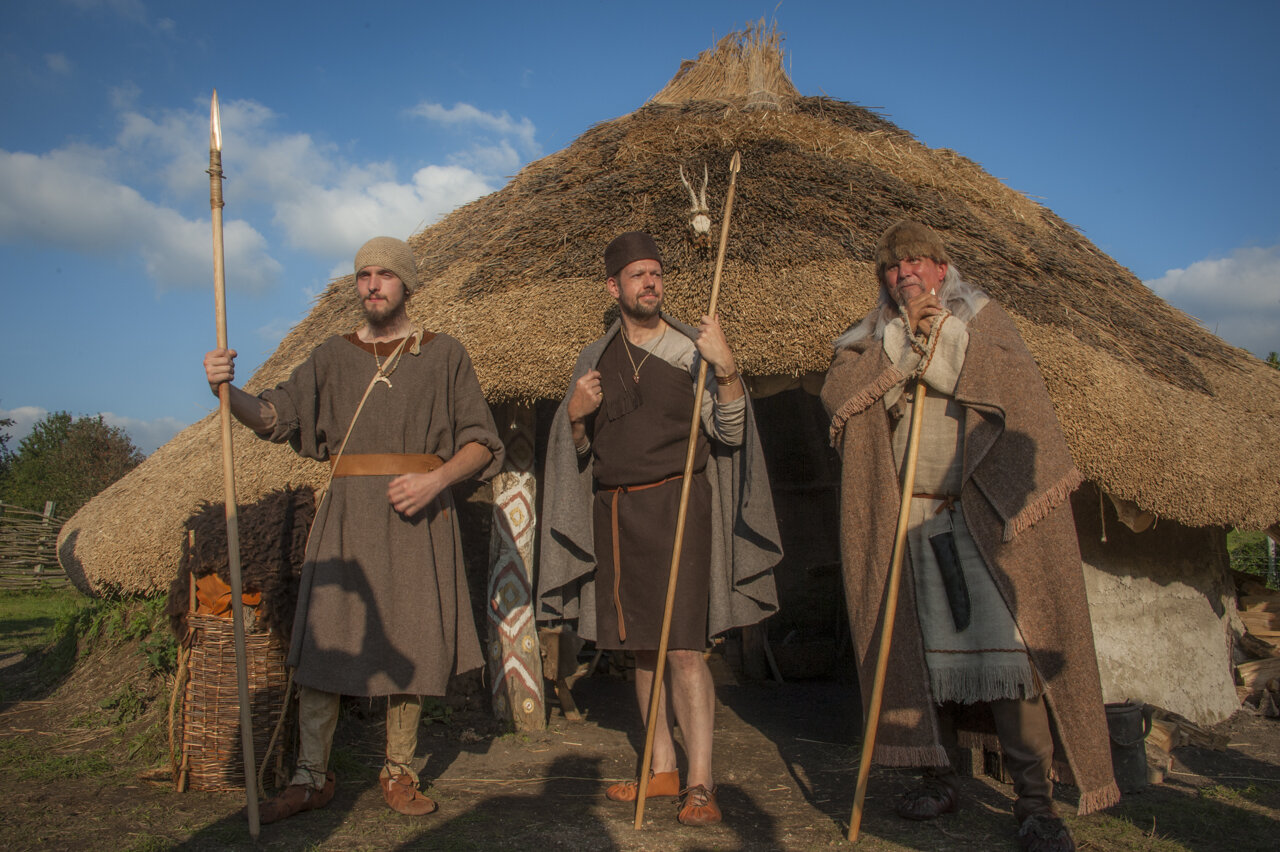Bronze Age project co-ordinator Trevor Creighton reflects on our celebration of the (almost!) completion of our Bronze Age roundhouse! We were joined by the volunteers, their families, local supporters and funders alongside Professor Alice Roberts and Drs Phil Harding, Stuart Prior and Rachel Pope to celebrate this fantastic project!
Saturday October 9th was the official launch day for the Operation Nightingale roundhouse and all of the stars turned out for the gala, red carpet (well, green grass) event. Although the building isn’t quite finished yet, we have been planning to hold an event at this time for some months. It seemed an ideal moment to celebrate the project while we still had a good chance of warm, dry weather – and we did, in spades! Rather than an official opening, we held a dedication ceremony to celebrate the achievements of the Operation Nightingale-Butser team. Professor Alice Roberts made the official dedication, ably assisted by Drs Phil Harding and Stuart Prior – all prominent archaeologists on and off the telly!
Left to Right: Dr Stuart Prior, Maureen Page - Director, Elaine Corner- Step Together Volunteering Manager, Simon Jay - Director, Professor Alice Roberts, Richard Osgood - Operation Nightingale, Dr Phil Harding, Trevor Creighton - Project Coordinator.
The Operation Nightingale Volunteer team
The roundhouse was looking stunning, made even more so by the decoration of interior walls and the two posts flanking the doorway. Our Creative Developer, Rachel, developed some creative schemes (see what I did there?) of figurative and abstract art inspired by Bronze Age pottery decorations and rock art, applied using pigmented clay wash. The icing on the cake was the completion of thatching the front of the building by our site manager and man for all seasons, Will, who has put an enormous amount of effort into the project from day one (and who, it must be said, rightfully received the biggest round of applause during the ceremony).
Director Maureen Page talks Professor Alice Roberts about the interior of the roundhouse.
The exterior of the Bronze Age roundhouse - this image clearly shows the diverse approaches to walling - turf on the left and clutch (chalk, hair, straw and water) on the right.
Site supervisor, thatcher, and Bronze Age interpreter Will receives a well deserved round of applause!
With our beautiful roundhouse as the backdrop, Richard and Elaine, from Operation Nightingale and Step Together Volunteering, respectively, joined Maureen and Simon to welcome everyone to the festivities, before Alice’s dedication words and the burial of a rather special pot. Quite often, prehistoric dwellings will have objects buried in or around them that seem to serve no practical purpose, but are too structured or peculiar to have been accidentally buried. The catch-all name for these finds is ‘deposition’. Although we don’t know what the meaning or purpose of such deposits was, the general consensus is that they are a dedication or offering for the home, either at the beginning or end of its useful life. In fact, this sort of practice wasn’t unique to prehistoric buildings, but has been practiced in Britain until very recently. Objects are found under or within medieval buildings, along with marks on timbers and walls, that are known to have been deposited or made to ward off evil and bring good luck. Indeed, it would be very surprising to think that the practice wasn’t still going on even in our contemporary, sceptical Western world.
The Operation Nightingale deposition consisted of objects placed in a simple pot, that had been made using Bronze Age techniques during the pottery workshop some months ago. Each of the Operation Nightingale team placed within it something that had some personal significance. In that way we were saying ‘we were here’ and perhaps that is a meaningful echo of those prehistoric deposits.
Operation Nightingale Volunteers and Alice Roberts with the pot ready for burial.
Operation Nightingale Volunteers and Dr Stuart Prior, Professor Alice Roberts and Project Coordinator Trevor Creighton.
Another special guest on the day was Dr Rachel Pope, Senior Lecturer in European Prehistory at the University of Liverpool, from where she had travelled to join us for the day! Rachel is an authority on roundhouse archaeology and construction and her enthusiasm for our project underscores its archaeological importance, which sits very nicely alongside of its significance as a truly unique wellbeing initiative and a piece of public archaeology for the education and enjoyment of what will be thousands of people in the coming years. I think it’s fair to say that this is unlikely to be the last such project.
The dedication was our opportunity to also thank the many people and organisations who have supported our project along the way. The cost of the materials used in the construction of the building was funded by a generous grant of £8,000 by the South Downs National Park Authority from their Covid-19 Recovery Fund, together with £35,000 for tools, materials and volunteer support which came from the Armed Forces Covenant Fund, thanks to a grant application compiled by Step Together volunteer charity. Step Together were also instrumental in recruiting, and providing assistance to, volunteers to work on the project. Without this funding the project would simply not have been possible.
Professor Alice Roberts cuts the Roundhouse cake with a Bronze sword!
We would like to warmly thank Alice, Phil, Stuart, and Rachel for making long treks from across the country to be with us and celebrate our project and, in doing so, help us to say a massive thankyou to the heroes of the piece – the Operation Nightingale volunteers/roundhouse builders.
Bronze Age re-enactors bring the Bronze Age house to life.
The whole Bronze Age building process has been documented on our online platform www.butserplus.com where you can watch step by step how we rebuilt the Bronze Age.
The Farm will be open to visitors during the whole of the October Half term week (23rd to 31st October) which will be the first opportunity to see our Bronze Age Roundhouse in person. We are also putting on a range of talks and Bronze Age themed activities to bring this special period to life at Butser. You can book tickets to visit us here

